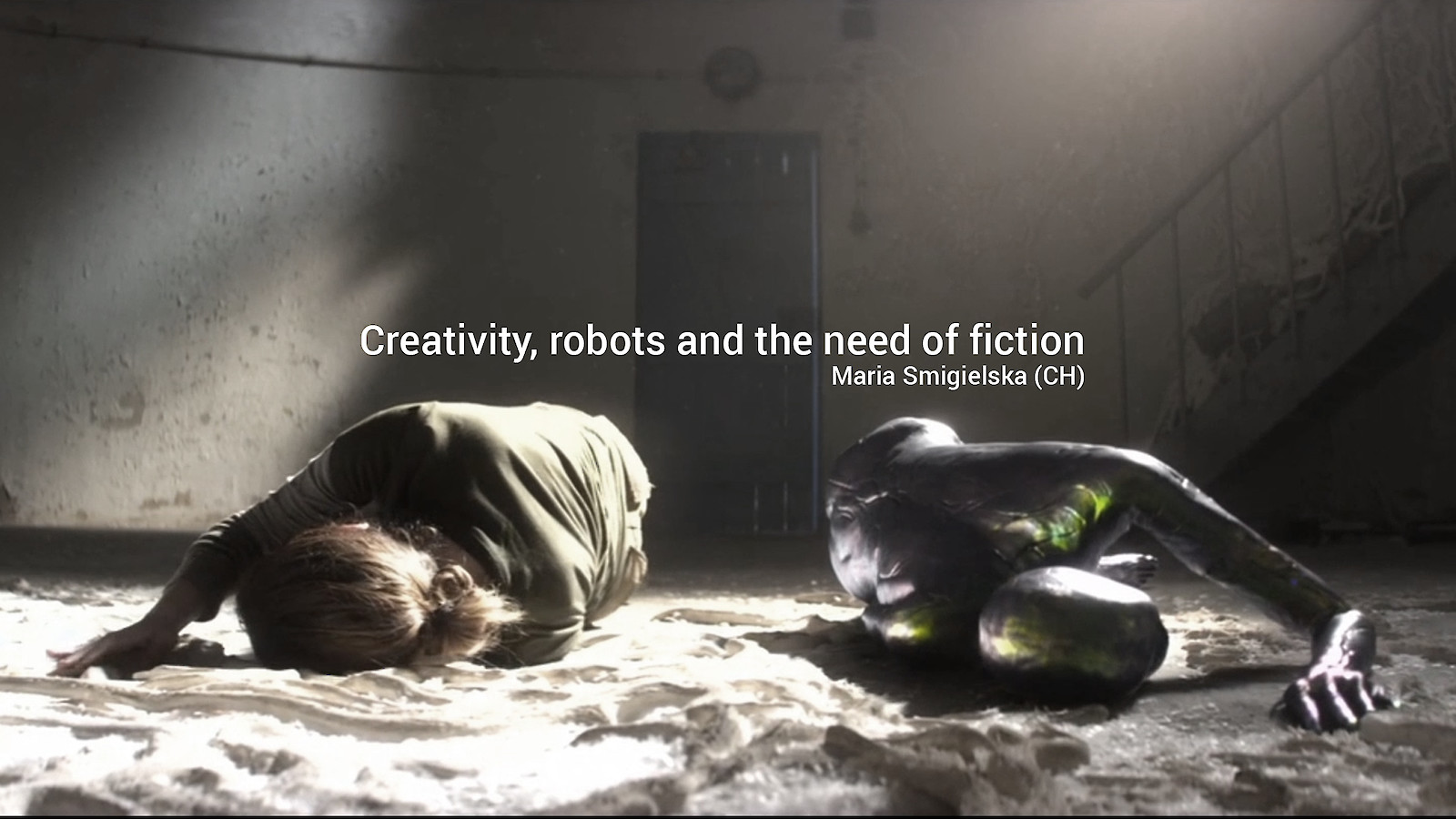The first dance
«The first dance» explores the nature of human-technology relationship with the very direct and embodied experiment of human- machine dance performance. The robotic arm together with a performance artist explore and expand the boundaries of their respective disciplines and search for similarities between themselves by comparing the complex nature of dance and robotics from highly mechanical ballet towards freer, improvised performance arts, from automated industrial machines to autonomous entities. Such trading of technical and interpretative capacities of both performers allow them to explore all gradients of roles to play and ways they interact, in order to finally create an alliance based on symmetries of repetitions, perfection, precision, limitation as well as based on inclusiveness beyond binary approach of either human or machine primacy, natural and artificial, organic and mechanical. The performance is both a retrospective of previous learning process of the robotic agent and a dancer to find common language between organic and digital ways to approach choreography and dance notations, as well as an installation engaging the audience through perpetually changing scenography interacting with the robotic actor.
«The first dance» is an opening chapter of a larger project called between us reflecting on human-technology relationship by specifically looking at the automation processes within creative industries and artistic realm with the use of its strong symbol of robotic arm at its core. With an introduction of the digital realm and artificial intelligence, this generic machine gained the capacity to build multiple performative identities ranging from highly automated towards more responsive and interactive. Together with other actors- digital, human or synthetic, they will aim to create multiple spectacles presenting variety of roles they can play and different levels of interactions in between. This project turns away from the dualistic approach and rigid boundaries towards more inclusive interfaces and richer interactions of multiple species and its agencies. Project will look closely at how automation of physical tasks through the robotic arm and automations of knowledge through machine learning strategies contributes to varied artistic and creative disciplines.
Artistic direction, scenography, robotic choreography:
Maria Smigielska
Dancer and choreographer:
Jaira Tabita Peyer (MA-student Trends & Identity, ZHdK)
Event:
October 25th, 2018
7:20 pm to 7:40 pm
Location:
Kaskadenhalle (Level 5)
